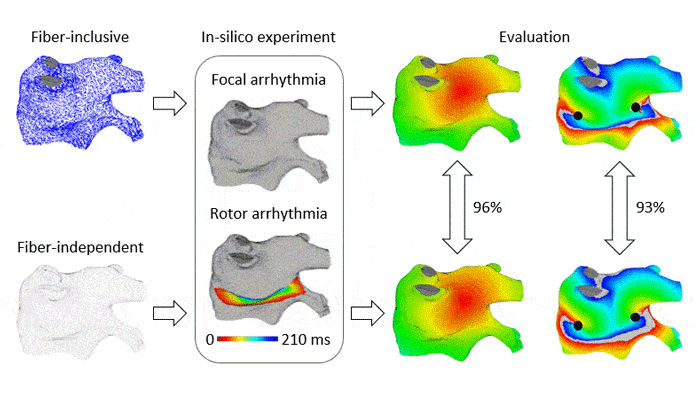Computational heart models have shown their ability to simulate realistic electrical activations of various arrhythmias. However, deploying such models for clinical ablation encounters a challenge: myocardial fiber organization cannot be directly measured with sufficient resolution in live tissue. Therefore, it is desirable to develop a heart model that does not require fiber data.
This study introduces a novel fiber-independent model tuning method specifically for the clinical setting. Utilizing the standard electroanatomical map obtained at the beginning of the procedure, the method fine-tunes diffusion coefficients in just 2 steps: starts with an initial guess value, then adjust according to the activation time errors. The tuning process for an entire left atrium takes less than 4 minutes on a personal computer, making it practical for the usual 3-6 hours ablation procedure.
We evaluate in-silico the accuracy of left atrium activation maps produced by a fiber-independent model with tuned diffusion coefficients, compared to a model incorporating myocardial fibers with the same geometry. We utilize publicly available Diffusion Tensor Magnetic Resonance Imaging (DT-MRI) data from 7 ex-vivo hearts that have high resolution fiber data as the ground truth. The comparison is carried out in 51 cases of focal and rotor arrhythmias located in different regions of these atria. On average, the local activation time accuracy is 96% for focal and 93% for rotor arrhythmias.
Given its reasonably good performance and the availability of readily accessible data for model tuning in cardiac ablation procedures, the fiber-independent model could be a promising tool for clinical applications.

